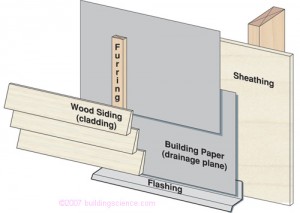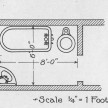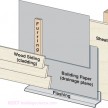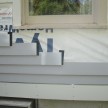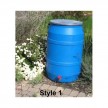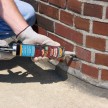Installing A Rain Screen And Moisture Barrier
Rain Screen And Moisture Barrier
I own a Dutch Colonial style two-story house. It is brick on the lower story and 1960s era Masonite type siding on the upper story. Roof is Gambrel.
The windows were replaced by the previous owner and do not have visible sills or casing. I want to replace the windows as well but don’t know what to do that would truly be traditional.
But my primary question at this time is that I want to remove all siding, building paper, and insulation and start from scratch.
I have read so many contradictory comments about what really works. Here in Oklahoma I see a lot of Tyvek but am concerned about using that after reading Paul Fisette’s paper from the UMass Amherst. I am more tempted to using a 15# or greater felt. What are your thoughts about felt vs house-wrap? Am I on the right track?
I would also like to construct a vented rain screen. Would you construct a rain screen and overlay the felt or house-wrap over a plywood or rigid foam sheathing?
I have a very good source locally for pine and WRC clapboard siding materials and am seriously considering using the pine product rather than WRC. Your thoughts about the material?
And finally… I must say that I really dislike paint. However, I love stain. I have very fond memories of staining my parents two-story rough cedar siding and rock house when I was growing up. I honestly
looked forward to staining it with a great oil based semi transparent stain every couple of years with annual touch ups.
Thank you for your comments.
Best regards,
Dennis Bolay
Oklahoma City
Dear Dennis,
Thank you for your email. I share your sentiment on Masonite siding – I hate it too! As far as your windows go having window sills is the traditional way to go. For guidance I’d look for similarly built circa 1960 homes in your area. Look at the trim details and window features.
Tar paper or house wrap?
House wrap is an important line of defense against moisture penetration. Designed properly it should allow the passage of water vapor, to allow the wall cavity to dry out, but it block out wind-driven rain, melting snow.
Paul Fisette’s article is an excellent one. Fisette, a building scientist at the University of Massachusetts, conducted tests on a house wrap brands along with 15-pound building felt. His test concluded that Tyvek and R-Wrap brands performed the best for house wrap and that tar paper was also effective. His results can be viewed here: Fisette’s study
Which should you use?
The debate on whether to use tar paper or Tyvek continues. Both work! Just make sure install one of them and take extra care in your rain screen, siding and flashing details to properly keep out water.
What is Tar Paper?
Tar paper is also known as building paper, felt paper, roofing paper or roofing underlayment. Building paper is vapor-permeable.
Basically, it is a tar impregnated paper and has been used in siding and roofing applications for years and only recently been replaced under wall siding with new technology based varior barriers like Tyvek, R-Wrap, DuPonts – Raindrop and Typar.
What is Tyvek?
One of the most popular applications of Tyvek® is as a house wrap to allow vapor to escape the house but help prevent water from entering the house envelope. It basically acts as a barrier to exterior water[rain and snow] in its liquid form, but allow water vapor [steam from showers, cooking, respiration, etc] to pass through
Tyvek is moisture resistant not water proof. It is necessary to take other measures to keep water from entering the building envelope.
I would place my house wrap or tar paper over the sheathing. I’ve never personally seen house-wrap installed over insulation board, if you have information on this method I would like to look at it.
Using A Rain Screen:
Fortunately you are considering installing a rain screen which in my opinion eliminates the concern on which house wrap to use. Use which ever product you feel most comfortable with – both will work well with a rain screen.
For readers that do not know what a rain screen wall is, it is a method of installing your exterior house siding with an air space, spaced off the house sheathing. This configuration allows for a drainage plane [air space] for moisture to drain and also allows for the siding to dry from both sides.
Another benefit of the rain screen are the use of furring strips that the siding is fastened to. By design the furring strips eliminate thousands of siding nail penetrations in your vapor barrier, keeping it from looking like Swiss cheese.
All the houses that I have seen with a rain screen seem to withstand the weather better and the paint lasts longer ~ the paint and siding longevity is obvious.
See my post on: What is a Rain Screen?
See my post on: Rain Screen Construction
Windows, Doors and Siding:
Installing a rain screen means you will have to fur out your windows and if budget allows this I s the perfect time to change out the windows and sill detail that you don’t like.
I prefer Western Red Cedar WRC over Pine anyday. Cedar has natural insect and rot resistant qualities. Make sure too seal the back side and end grain, as well as use tar paper splines at all vertical joints and seams.
See my post on: Keeping Moisture Out Of Cedar Clapboard Seams
You idea of a oil based semi transparent stain is a good one and something that I did on my hose for many years until my wife made me change the color and go to paint.
Good luck and please come back with what you decided to do!



